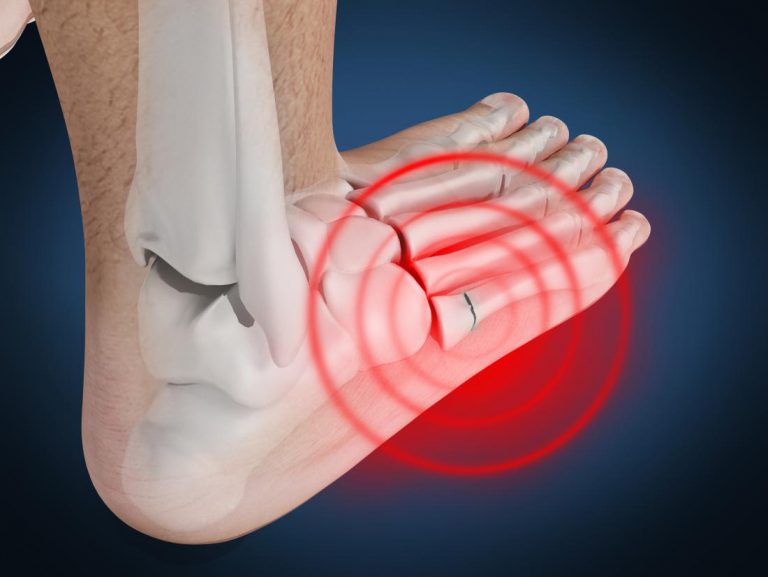"Floating toe" refers to one or more toes appearing elevated or raised due to a loss of support from the Metatarsophalangeal joint and surrounding structures. Itcan be from trauma, toe misalignment, muscle weakness or imbalances, ligament injuries, or neurological issues.
The term "floating toe" is used when there is a dislocation or severe sprain of the metatarsophalangeal joint (the joint between the metatarsal bone and the proximal phalanx bone of the toe). It can lead to instability in the joint and cause the toe to appear elevated or out of alignment with the adjacent toes.
The diagnosis of a floating toe requires a thorough physical examination, imaging tests (such as X-rays or MRI), and consideration of the patient's medical history. Once the underlying cause is identified and appropriate treatment to address the issue and stabilize the toe's positionis recommended.
Treatment for a floating toe involves addressing the underlying cause. It involves immobilization, physical therapy to strengthen muscles and improve joint stability, and in some cases, surgical intervention to repair damaged ligaments or realign the bones.
Some factors that cause a "floating toe" include:
- Ligament Injuries: Damage to the ligaments that stabilize the toes and maintain their proper alignment can lead to instability and cause a toe to appear elevated or out of place.
- Trauma: A direct impact or injury to the toe or the foot can result in dislocation of the metatarsophalangeal joint or fractures of the toe bones.
- Muscle Weakness or Imbalance: Weakness in the muscles that control toe movement and stability can result in a toe not being supported, causing it to appear elevated.
- Neurological Issues: Nerve damage or neurological conditions that affect the muscles and nerves controlling the movement can lead to instability and misalignment of the toe.
- Congenital Factors: Some individuals may be born with structural abnormalities or variations that cause floating toes.
- Arthritis: Inflammatory or degenerative joint conditions, such as rheumatoid arthritis or osteoarthritis, affect the integrity of the joints in the foot, leading to toe misalignment.
- Joint Hypermobility: Some people naturally have flexible joints, which increase the risk of joint instability, including in the toes.
The treatment depends on the underlying cause and severity of the condition. Consult with a foot and ankle doctor at DeNiel Foot and Ankle Center to best determine the cause of your floating toe and the appropriate treatment.
Some possible approaches that a podiatrist might consider:
- Conservative Treatment:
- Immobilization: If the toe instability is due to a minor injury or strain, the toe may be immobilized using a splint or brace to allow it to heal and regain stability.
- Physical Therapy: Physical therapy can strengthen the muscles surrounding the affected toe, improve balance, and restore proper alignment.
- Medications:
a. Nonsteroidal anti-inflammatory drugs (NSAIDs) may be prescribed to reduce pain and inflammation associated with ligament injuries or arthritis.
- Footwear Modifications:
a. Customized orthotic inserts or shoe modifications can provide better support and alignment for the foot and toes, helping to alleviate the floating toe condition.
- Injection Therapy:
a. In cases of inflamation or arthritis, cortico steroid injections can provide temporary relief by reducing inflammation and pain.
- Surgical Interventions:
- Ligament Repair: If the floating toe is caused by ligament damage or instability, surgical repair or reconstruction of the damaged ligaments may be necessary.
- Joint Realignment: In severe cases, surgical procedures to realign the joint and correct any dislocations or misalignments may be recommended.
- Joint Fusion: In cases where the joint is severely damaged and cannot be effectively stabilized through other means, joint fusion may be considered. This involves permanently joining the bones of the joint to prevent movement and pain.
- Neuromuscular Rehabilitation:
a. If the floating toe is related to nerve dysfunction, working with a specialist in neuromuscular disorders may be necessary to address the underlying neurological issues.





Comments